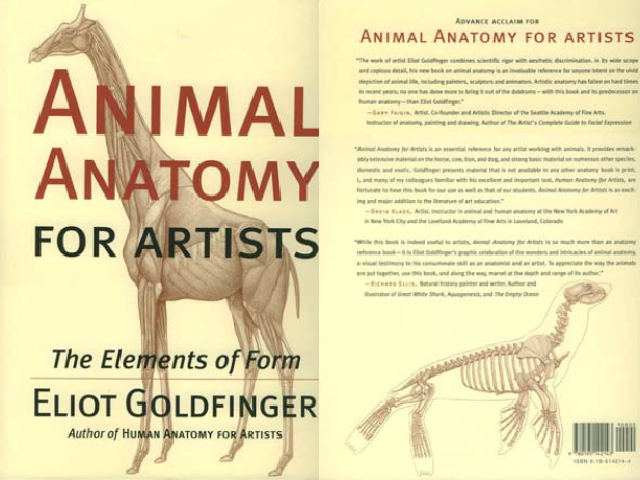Goldfinger, E. 2004. Animal anatomy for artists. The elements of form. – Oxford, Oxford University Press
Abstract
In more than 250 pages with over 570 illustrations (most of them original handmade pencil drawings) Eliot Goldfinger delivers an excellent reference guide on animal anatomy. With a scientific approach Goldfinger sets out describing the ideas of basic form and elements of (animal and human) anatomy. He explains and illustrates how muscle and bone together form the strong basis for body composition, creating what he calls the body plan: a standard conception of how an animal body is constructed. Understanding this body plan is necessary for a thorough perception of the outer surface of the animal body. As Goldfinger himself explains in the introduction of his book (p. xi), it is the understanding of that what lies beneath this outer surface which is of utmost importance to the artist: “Artwork can embellished with the most numerous of details, but it must conform to a greater concept of larger shapes and volumes”.
Goldfinger continues after this explanatory part with showing that the body plan is transferable to all animals (classified in groups) he presents in his book by minutely illustrating the different muscle groups and bone collectives of the animals, showing in detail all the small individual differences, but more importantly, the large similarities they have in the way their bodies are constructed. Read more...
Downloads




